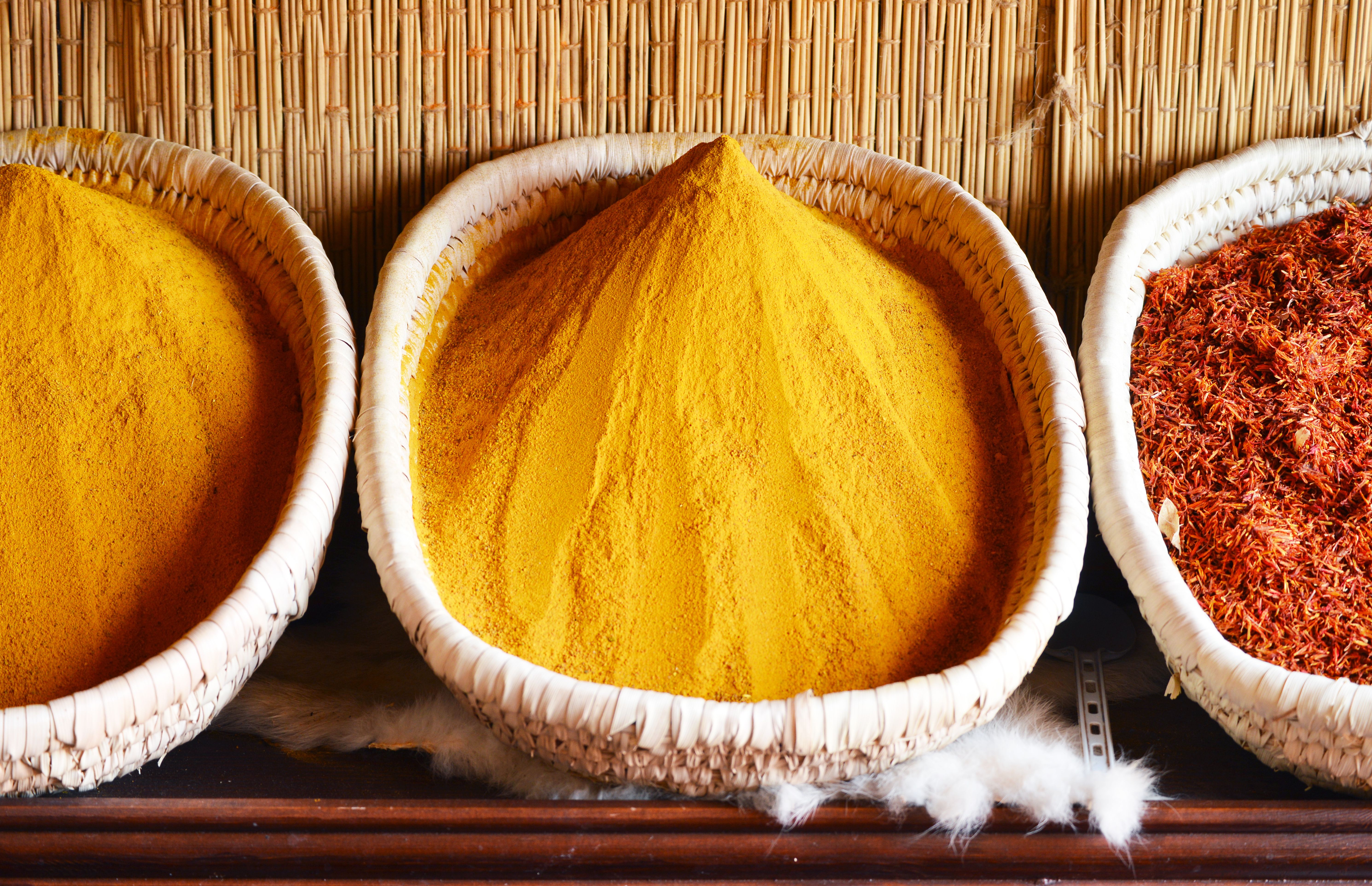Studying the Chemical Compounds in Turmeric
A group of researchers from India are using analytical methods to analyze the purity of the spice.
Turmeric and other spices are displayed at a market.

Turmeric is a popular spice used throughout Southeast Asia. While traditionally used to flavor dishes like curry, turmeric has also become popular in the pharmaceutical and cosmetics industry.
To better understand the purity of the compounds in this spice, a group of researchers from the National Institute of Pharmaceutical Education and Research (NIPER) Guwahati used repeated flash chromatography to isolate and purify curcuminoids in lakadong turmeric (1). The study was published in the most recent edition of the Journal of Chromatography A.
India is one of the largest exporters of turmeric in the world and there is a large demand for pure versions of curcumin because of its anti-inflammatory, anti-microbial, cardioprotective, and neuroprotective qualities, the researchers wrote. The market for curcumin was $58.2 million in 2020 and is expected to jump 16.1% between 2020 and 2028.
“The Coronavirus disease 2019 (COVID-19) pandemic has increased the consumption of turmeric as an immunity booster,” the scientists wrote. “It is foreseen that the demand for curcumin will swiftly reach its pre-COVID level, and the market is expected to see an exponential growth rate throughout the projection period, in line with the growing traction for curcumin as a treatment for viral infections around the world.”
The researchers studied lakadong turmeric, which has a high concentration of curcuminoids. These include curcumin, desmethoxycurcumin, and bisdemethoxycurcumin (1). To characterize the curcuminoids, the research team used ultraviolet-visible (UV-vis) Spectroscopy, Fourier transform infrared (FT-IR) spectroscopy, differential scanning calorimetry (DSC), thermogravimetric analysis (TGA), proton nuclear magnetic resonance (1HNMR), carbon-13 nuclear magnetic resonance (13CNMR), high-resolution mass spectrometry (HRMS), and inductively coupled plasma mass spectrometry (ICP-MS).
Using the hot percolation method for 18 hours using 100% ethanol at 40 °C, the researchers extracted and analyzed the curcuminoids. Curcumin, desmethoxycurcumin, and bisdemethoxycurcumin were all analyzed to be more than 99.5% purity using high performance liquid chromatography-diode array detector (HPLC-DAD), they wrote. HPLC-DAD is an analytical technique commonly used in the food and beverage industries for quality control. Using HPLC-DAD, the sample is first analyzed using a chromatography column and then scanned by a diode-array detector.
“This method is economical, and reliable and can be easily scaled up to the industrial level,” the scientists wrote. “These high pure markers have high demand and huge commercial potential as active pharmaceutical ingredients (APIs) or as reference molecules in various industry segments such as pharmaceutical and agro-based industries.”
Reference
Vardhini, N. M.; Punia, J.; Jat, S.; Pawar, S. D.; Devi, N.; Radhakrishnanand, P.; Murty, U. S.; Saini, A.; Sethi, K. K.; Kumar, P. Purification and Characterization of Pure Curcumin, Desmethoxycurcumin, and Bisdemethoxycurcumin from North-East India Lakadong Turmeric (Curcuma Longa). Journal of Chromatography A 2023, 1708, 464358. DOI:10.1016/j.chroma.2023.464358.
Investigating the Protective Effects of Frankincense Oil on Wound Healing with GC–MS
April 2nd 2025Frankincense essential oil is known for its anti-inflammatory, antioxidant, and therapeutic properties. A recent study investigated the protective effects of the oil in an excision wound model in rats, focusing on oxidative stress reduction, inflammatory cytokine modulation, and caspase-3 regulation; chemical composition of the oil was analyzed using gas chromatography–mass spectrometry (GC–MS).
Evaluating Natural Preservatives for Meat Products with Gas and Liquid Chromatography
April 1st 2025A study in Food Science & Nutrition evaluated the antioxidant and preservative effects of Epilobium angustifolium extract on beef burgers, finding that the extract influenced physicochemical properties, color stability, and lipid oxidation, with higher concentrations showing a prooxidant effect.
Rethinking Chromatography Workflows with AI and Machine Learning
April 1st 2025Interest in applying artificial intelligence (AI) and machine learning (ML) to chromatography is greater than ever. In this article, we discuss data-related barriers to accomplishing this goal and how rethinking chromatography data systems can overcome them.



